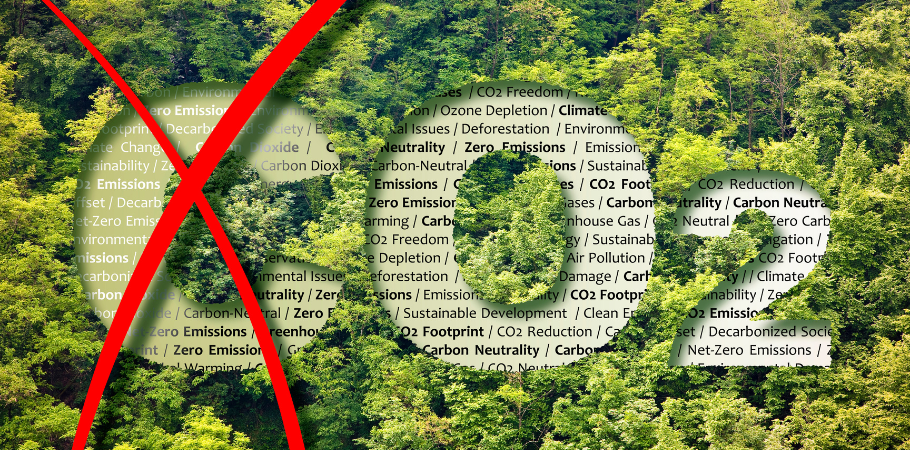
What is CO2 emission factor? The CO2 emission factor represents the amount of carbon dioxide emitted per unit of energy produced or consumed, making it crucial in calculating greenhouse gas emissions. Different energy types, technologies, and fuel qualities influence this factor, contributing to variations in emission calculations. Understanding and accurately determining the CO2 emission factor is essential for businesses aiming to reduce their carbon footprint and comply with environmental standards.
In this article, let’s explore what is CO2 emission factor, and CO2 emission coefficients by energy form.
What is CO2 Emission Factor?
The CO2 emission factor is the amount of CO2 emitted into the environment for each unit of energy produced or consumed.
CO2 emission coefficients vary depending on:
- Energy type: Fossil energy such as coal and oil have a much higher CO2 emission coefficient than renewable energy such as solar energy and wind energy.
- Energy production and use technology: For example, a power plant using advanced technology will have a lower CO2 emission factor than a power plant using the old technology.
- Fuel quality: High-quality energy (such as clean coal) will have a lower CO2 emission factor than low-quality energy (such as peat).
Therefore, determining the CO2 emission factor while calculating greenhouse gas emissions will be uncertain. Calculations based on general data may be completely different from the actual situation.

CO2 Emission Coefficients by Energy Forms & How to Convert Energy to TOE
In the past, energy management faced many difficulties because each type of energy used had its own unit of calculation and characteristics. It is challenging to statistically, compare and evaluate the energy efficiency of many different types of energy. In order to solve this problem, the TOE unit was born, becoming a common and unified solution as a basis for measurement.
TOE stands for Tonne of oil equivalent – “Tonne of oil equivalent” or “Tonne of oil equivalent”, which is a unit of measurement used to convert different forms of energy in terms of energy value equivalent to a ton of oil.
Energy to TOE Conversion Table and CO2 emissions
No. | Type | Unit | TOE/unit | MJ/unit | CO2 Emission Factor | |
Kg CO2/MJ | Tonne of oil equivalent CO2/unit | |||||
1 | Electricity | 1000 kWh | 0,1543 | – | – | 0,6766 |
2 | Coke | Ton | 0,7 – 0,75 | 29.309 – 31.402,5 | 0,0946 | 2,77 – 2,97 |
3 | Coal bran type 1,2 | Ton | 0,7 | 29.309 | 0,0983 | 2,88 |
4 | Coal bran type 3,4 | Ton | 0,6 | 25.122 | 0,0983 | 2,47 |
5 | Coal bran type 5,6 | Ton | 0,5 | 20.935 | 0,0983 | 2,06 |
6 | Detector Oil (DO Oil) | Ton | 1,02 | 42.707,4 | 0,0741 | 3,165 |
1000 litres | 0,88 | 36.845,6 | 2,730 | |||
7 | FO Oil | Ton | 0,99 | 41.451,3 | 0,0774 | 3,208 |
1000 litres | 0,94 | 39.357,8 | 3,046 | |||
8 | LPG | Ton | 1,09 | 45.638,3 | 0,0631 | 2,880 |
9 | Natural Gas | 1000m3 | 0,9 | 37.683,0 | 0,0561 | 2,114 |
10 | Gasoline | Ton | 1,05 | 43.963,5 | 0,0693 | 3,047 |
1000 litres | 0,83 | 34.752,1 | 2,408 | |||
11 | Jet fuel | Ton | 1,05 | 43.963,5 | 0,0715 | 3,143 |
12 | Rice Husks/Other Solid Biomass | Ton | – | 16.100 | 0,100 | – |
13 | Wood/Scrap Wood | Ton | – | 16.200 | 0,112 | – |
Example Illustrates How to Use the Energy to TOE Conversion Table and CO2 Emissions
Enterprise A in 2024 uses 10000 m3 of natural gas (NG) and 2000 tons of coke. The conversion method is as follows:
Convert to TOE:
- Natural gas (1000m3): 10*0.9=9 (TOE)
- Coke (tons): 2000*0.7=1400(TOE)
- Total Energy Consumption: 9 + 1400 = 1409 (TOE)
Convert to CO2 emission factor:
- Natural gas (1000m3): 10*2.114 = 21.14 (tons of CO2)
- Coke (tons): 2,000 * 2.77 = 5540 (tons of CO2)
- Total CO2 emissions: 21.14 + 5540 = 5561.14 (tons of CO2)
Difference of CO2e and CO2
CO2 (carbon dioxide) is a common greenhouse gas, produced by many human activities such as burning fossil fuels, deforestation, industrial production, etc.
CO2e (carbon dioxide equivalent) is a unit of measurement for the amount of greenhouse gases equivalent to CO2. It is used to compare the impact of different greenhouse gases on global warming.
The above two concepts are often confused with each other. Accordingly, we can temporarily understand as follows:
CO2e = CO2 + NH4 + N2O + Other Emissions
For greenhouse gas inventory reporting, enterprises need to report the CO2e index, which is the sum of the causes of greenhouse gases.
After a basic understanding of the differences, in fact, each greenhouse gas will have a different impact on climate warming. In other words, 1 unit of NH4 or N2O will be “more harmful” than 1 unit of CO2.
To measure the level of harm, let’s take a look at the GWP (Global warming potential) index.
What is GWP?
GWP stands for Global Warming Potential, which is an index that measures the global warming potential of a greenhouse gas compared to CO2. In other words, GWP indicates how many times a certain ton of greenhouse gas has a global warming impact compared to a ton of CO2 in a given period of time (usually 100 years).
How to calculate GWP:
GWP is calculated by comparing the amount of thermal radiation that a greenhouse gas absorbs and retains in the atmosphere with the amount of thermal radiation that CO2 absorbs and captures. For example, methane (CH4) has a GWP of 25, meaning that one ton of methane has a global warming impact of 25 times that of one ton of CO2 in 100 years.
Based on our above understanding of GWP, we can more accurately understand the conversion formula to CO2e as follows:
CO2e = CO2 + NH4*25 + N2O*298+ Other emissions
Accordingly, the coefficient of 25, 298 will be mentioned in the GWP index. Up to now, the most common version of the GWP index is AR5 (issued by the IPCC in 2013-2014). The latest update is AR6 issued in 2021-2022 also by the IPCC.
Conclusion: What is CO2 Emission Factor?
In conclusion, understanding what is CO2 emission factor can provide vital insights into the environmental impact of various energy sources. This factor, influenced by energy type, technology, and fuel quality, plays a critical role in calculating and reducing emissions. By utilising conversion methods like TOE and understanding the Global Warming Potential (GWP) of different gases, businesses can accurately assess their carbon footprint, contributing to a more sustainable future.
Calculations based on general data may be completely different from the actual situation, not to mention that besides CO2, there are still many other types of emissions. Businesses that need to inventory emissions should look for experienced experts to be surveyed and consulted, helping to calculate accurately.
See more: How To Build an Effective and Reliable Carbon Capture System


